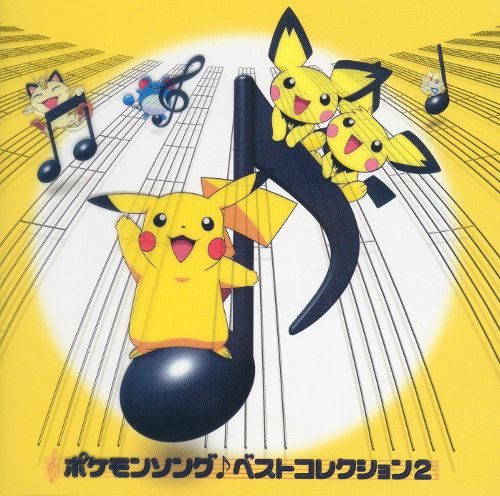
On September 16, 2018, the world of Japanese pop culture lost one of its biggest icons, Namie Amuro. From the ages of 14 to 40, she was active not only as a singer, but also as a fashion trend setter for ladies in Japan. While she was famous as a solo artist for a majority of her career, Namie Amuro debuted as the lead singer of an idol group called the Super Monkeys, who were from Okinawa like her. They made their debut in September 1992 with Mr USA. In 1995, Namie Amuro went solo and the rest of the Super Monkeys rebranded themselves as MAX, who would also go on to succeed and remain active in the music industry.
As Namie Amuro rose as a solo artist, she was referred to as the Queen of J-Pop and was often compared to Madonna in relation to the impact she made. Due to her tremendous success in J-Pop, it was only a matter of time that she would also be a contributor to the world of anime.
Pokemon 2000
While the English version of Pokemon 2000 features Donna Summer, Weird Al, and the B-52’s, the Japanese version of the movie has toi et moi as its ending theme. And as you can guess, Namie Amuro provided the song. The song is pretty energetic and is tune with Namie Amuro’s style through the first half of her career. It debuted at number 3 on the Oricon charts showing how tremendous it was for Amuro and Pokemon to cross promote. Beyond being a great song among her many hits, toi et moi perfectly captures Ash/Satoshi’s relationship with Pikachu and his friends, and that their bond is unbreakable.
Inuyasha
In the 2000s, Namie Amuro was signed to Avex Trax, who largely contributed to the soundtrack of Inuyasha. In addition to other big names from J-Pop such as V6, Dream, and Ayumi Hamasaki, the famous label would give Namie Amuro the opportunity to provide songs for this hit anime. She sang Come, the seventh ending song to the TV series, and Four Seasons, the ending theme to the third movie.
As opposed to the more energetic tracks from her early teen years and with toi et moi from Pokemon, Come and Four Seasons were more emotional. Come uses a lot of slow techno beats and instrumentals, and feels very Celtic with its melody. The lyrics of Come perfectly captures the complicated and yet direct nature of the relationship between Inuyasha and Kagome, and that they can always rely on each other.
As for Four Seasons, it is also more emotional in tone, but uses acoustics to capture its atmosphere. While Come emphasizes more on the relationship between Kagome and Inuyasha, Four Seasons can be seen both as an interpretation of Inuyasha’s long lost relationship with Kikyou. As for how these songs succeeded in the Oricon, Come debuted at number 8 while Four Seasons was number 6.
Dr.
Just like how Daft Punk made Interstellar 5555 as a collaboration with Leiji Matsumoto, Namie Amuro does something similar with Dr. This anime music video portrays Namie as an anime character as she goes to the future in order to save it. It tells a full story and is filled with edge of your seat action. The composition and delivery of the song feels appropriately technological and intense to convey its story. The rhythm feels a bit more broken compared to most of her hits, but the extremity of it is intended to show an anger if people don’t make a change, then it’s their fault that things are doomed. Through this song, we can see that Namie wants to use her fame to make a difference.
Defend Love
So what happens when you send Namie Amuro to the world of the original Gundam series? Then you get Defend Love! The music video is pretty much a homage to Gundam itself as Namie is portrayed as Lalah Sune as she interacts with Amuro Ray, Gundam’s main character. As she interacts with Amuro, Tooru Furuya, the character’s seiyuu since the series debut, also comes back to reprise the role as he tries to open her heart (in the same way he tries to plead with Lalah to stop fighting like in the original series). The beats perfectly capture the sci-fi setting of Gundam and Namie’s voice sounds appropriately mature in context to the message of the lyrics as she tries to explore the nature of human conflict. As a whole, not only is it a unique song compared to Namie’s other works, it’s a great song for the Gundam franchise as well.
Final Thoughts

While her contributions to anime are small in number, they are still big in impact. In addition to contributing to anime, she has also contributed to J-Dramas and video games. In J-Dramas, her biggest hit is without a doubt, Can You Celebrate, the opening theme to 1997’s Virgin Road (starring Takashi Sorimachi from the first live action GTO). Around that same time, she was featured in her own game for the Sega Saturn, Digital Dance Mix, Vol 1: Namie Amuro. While it isn’t a game you can play, it was more of a tech demo to show the power of Saturn’s rendering. So if you want to see what she looks like in Sega Saturn form, feel free to get yourself a copy. As for the real life Namie Amuro, we wish her the best.

